If you're a pool owner in Queen Creek, San Tan Valley, Mesa, Gilbert, or Chandler, you've likely noticed your pool service bills increasing over the past few years. As we move through 2025, many homeowners are asking the same question: "Why does pool maintenance cost so much more now?" At Complete Aquatic Solutions, we believe in transparency, so we're breaking down why your pool service costs have increased—particularly when it comes to chemicals and labor—and what this means for your backyard oasis.
The Rising Tide of Chemical Costs
Global Supply Chain Disruptions Continue
The pool industry hasn't been immune to the global supply chain challenges that began several years ago. While some sectors have recovered, specialty chemicals used in pool maintenance continue to face production bottlenecks and transportation hurdles.
For chlorine specifically, prices have stabilized somewhat since the dramatic spikes following the Louisiana chlorine plant fire in 2020, but they remain significantly higher than pre-2020 levels. The manufacturing capacity simply hasn't caught up with demand, especially as more homeowners in Arizona continue to install pools.
Environmental Regulations Impact Production
New environmental regulations implemented in 2024 have affected how pool chemicals are manufactured, transported, and stored. While these regulations are important for environmental protection, they've added compliance costs throughout the supply chain that ultimately reach you, the consumer.
Arizona's Unique Climate Challenges
Living in the East Valley means dealing with extreme heat, minimal rainfall, and high evaporation rates. These factors actually increase your pool's chemical consumption:
- Higher temperatures accelerate chlorine burn-off, requiring more frequent additions
- Dust storms and monsoon season introduce more contaminants into your pool
- Increased water evaporation concentrates existing chemicals, requiring more careful balancing
As one of our Gilbert customers recently discovered, their monthly chemical usage nearly doubled during the record-breaking heat waves of 2024 compared to previous years.
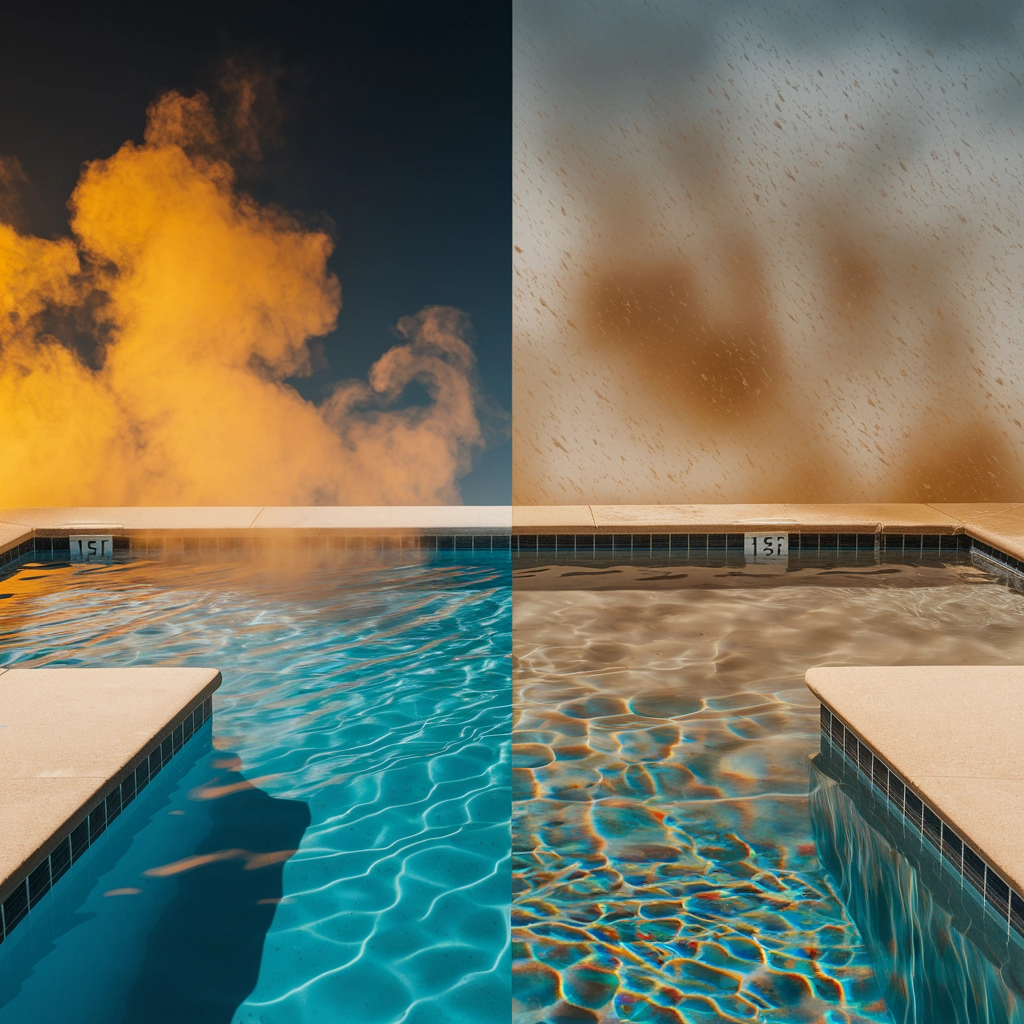
Labor Costs: The Human Element
Skilled Technician Shortage
The pool industry is experiencing a significant shortage of qualified technicians. In 2025, we're seeing the impact of fewer young people entering trades combined with experienced professionals retiring. This labor shortage is particularly acute in rapidly growing areas like Queen Creek and San Tan Valley, where new pool construction has outpaced the growth in service professionals.
The shortage has driven hourly rates from the $70-$98 range in previous years to $90-$120 for experienced technicians in 2025. This isn't price gouging—it's simple supply and demand economics in action.
Specialized Training Requirements
Modern pools are becoming increasingly complex. From advanced automation systems to sophisticated chemical controllers and energy-efficient equipment, today's pool technician needs significantly more training than just a few years ago.
At Complete Aquatic Solutions, we invest heavily in continuous education for our technicians. This ensures they can properly service and troubleshoot the latest equipment installed in East Valley homes, but this expertise comes at a cost that's reflected in labor rates.
Rising Business Operation Costs
The cost of doing business has increased across the board:
- Commercial insurance premiums for pool service companies have increased by approximately 15-20% since 2023
- Fuel costs for service vehicles remain high
- Vehicle maintenance and replacement costs have increased
- Office space, software systems, and administrative costs continue to rise
All these factors contribute to the labor portion of your pool service bill, even though they may not be immediately obvious.
Equipment and Replacement Parts
While not directly related to regular maintenance, equipment repair and replacement represent significant costs that many pool owners face in 2025.
Filter Maintenance Costs
Pool filters are essential for water clarity, but they require regular maintenance and occasional replacement:
- Sand filter media replacement now costs $250–$500 (up from $200-$400 in previous years)
- Cartridge filter replacements range from $125–$350
- DE filter grid replacements run $350–$700
Pump and Heater Expenses
When critical components fail, the costs can be substantial:
- Pool pump repairs now range from $150 to $800
- Complete pump replacements cost between $1,000 and $1,800
- Pool heater repairs range from $200 to $1,800
- Heater replacements can cost between $2,500 and $6,000
These increased equipment costs reflect both inflation and the transition to more energy-efficient technology mandated by recent regulations.
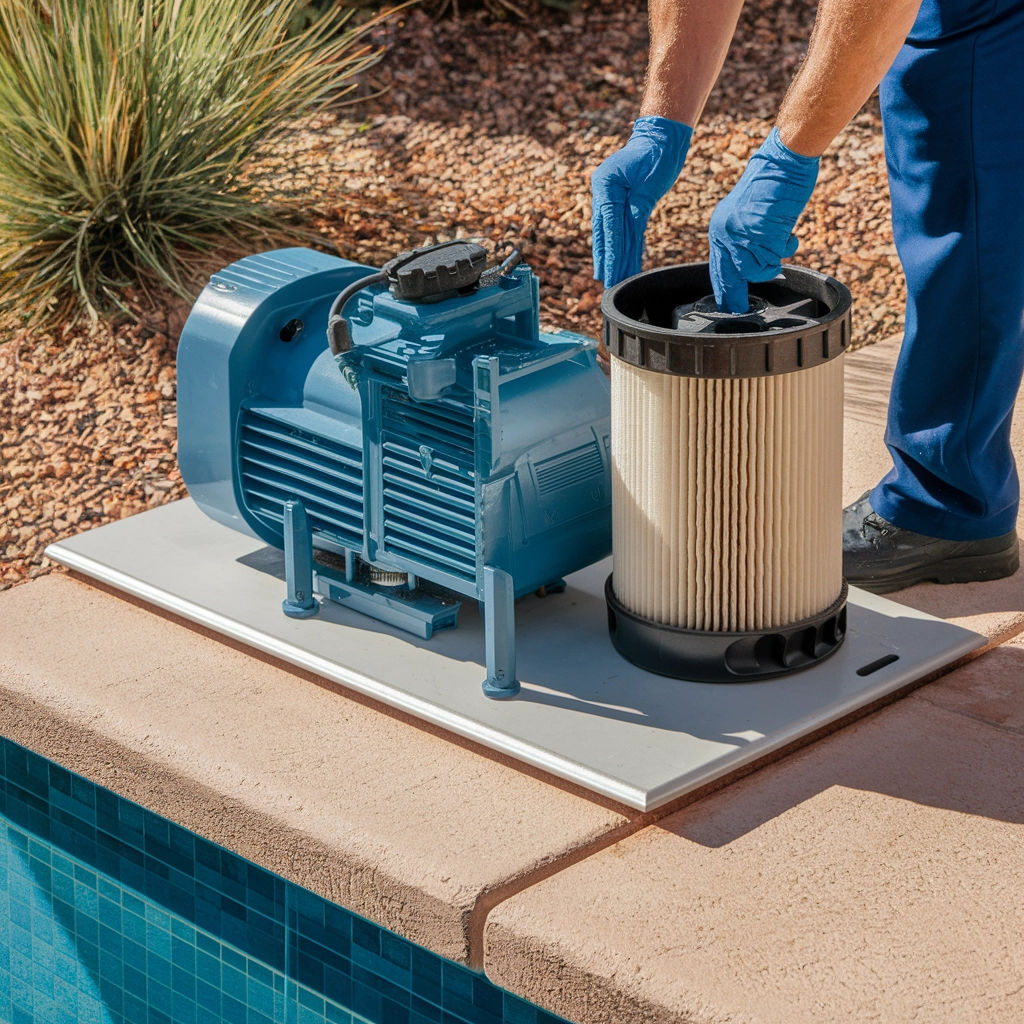
How to Manage Rising Costs in Queen Creek and Surrounding Areas
Despite these increasing costs, there are several strategies to help manage your pool expenses without compromising water quality or equipment longevity.
Preventative Maintenance Saves Money
Regular maintenance prevents costly repairs. Here's what we recommend to our Chandler and Mesa customers:
- Never skip regular service visits: Addressing small issues before they become major problems saves money in the long run
- Keep your filter clean: Regular filter cleaning extends equipment life and improves efficiency
- Maintain proper water balance: This reduces chemical consumption and protects expensive equipment from corrosion
- Use a pool cover: Reduces evaporation, chemical loss, and debris in the pool
When DIY Makes Sense (And When It Doesn't)
Many homeowners in San Tan Valley and Gilbert have found success with handling some maintenance tasks themselves:
- Water testing: Invest in a good test kit and learn to interpret results
- Basic skimming and cleaning: Regular removal of debris prevents bigger problems
- Simple chemical additions: Following professional guidance for routine chemical additions
However, we strongly recommend professional assistance for:
- Equipment repair and troubleshooting: Improper repairs can cause further damage
- Comprehensive water analysis: Professional testing identifies issues home kits can miss
- Filter deep cleaning: Improper cleaning can damage expensive components
- Leak detection: Finding hidden leaks requires specialized equipment
Consider Upgrade Investments That Save Money Long-Term
While the upfront costs are higher, several upgrades can reduce operating expenses:
- Variable-speed pumps: Use up to 80% less electricity than single-speed models
- Automated chemical controllers: Provide precise dosing, reducing chemical waste
- Energy-efficient heaters: New models use significantly less gas or electricity
- Salt chlorine generators: Can reduce ongoing chemical costs for many pool owners
Our team at Complete Aquatic Solutions can help evaluate which upgrades might provide the best return on investment for your specific pool.
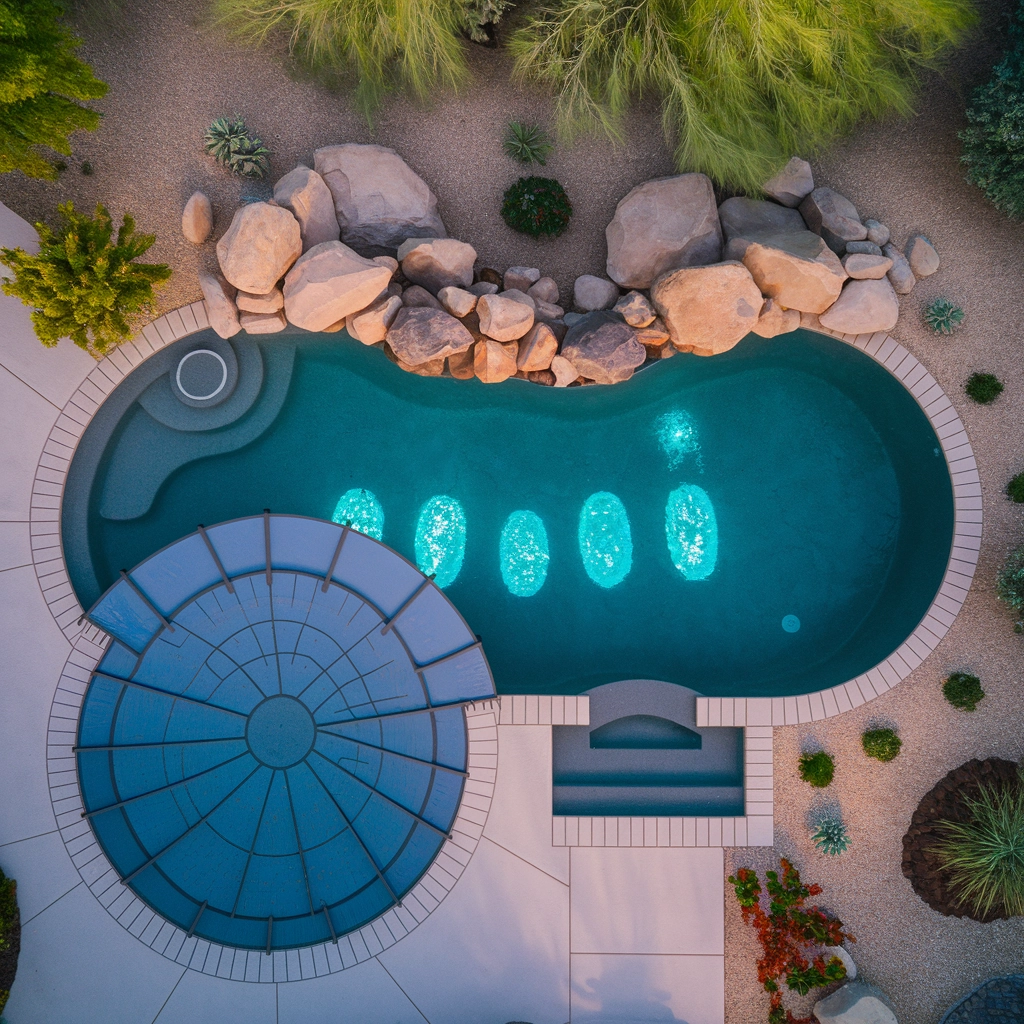
How Complete Aquatic Solutions Is Addressing Rising Costs
We understand that price increases are challenging for homeowners. Here's how we're working to provide the best value despite industry-wide cost increases:
Transparency in Billing
We provide detailed invoices that break down exactly what you're paying for. No hidden fees or mysterious charges—just clear information about the services provided and materials used.
Efficiency Improvements
We've invested in route optimization software to reduce drive time between service stops. This allows our technicians to service more pools each day, helping to offset rising labor costs.
Value-Added Services
We now include complimentary annual equipment inspections with our regular service plans, helping to identify potential issues before they become expensive emergencies.
Education and Resources
Our DIY Resource Center provides pool owners with information to better understand their pools and perform basic maintenance tasks correctly, potentially reducing service frequency for budget-conscious customers.
The Bottom Line: Understanding Value vs. Cost
While pool maintenance costs have undeniably increased in 2025, it's important to consider the value received rather than just the price tag. Professional pool service:
- Protects your significant investment in your pool
- Ensures safe, healthy swimming water for your family
- Extends the lifespan of expensive equipment
- Provides peace of mind and more free time to enjoy your pool
As one of our long-time Mesa customers recently told us, "I tried going the DIY route to save money, but after dealing with algae problems and a pump failure, I realized professional service is actually the more economical option in the long run."
Get a Personalized Cost Assessment
Every pool in Queen Creek, San Tan Valley, Mesa, Gilbert, and Chandler has unique needs based on size, equipment, usage patterns, and environmental factors. For a personalized assessment of your pool's maintenance requirements and costs, contact our team or request a quote.
We're committed to helping you understand your pool service costs and finding the maintenance approach that delivers the best value for your specific situation.
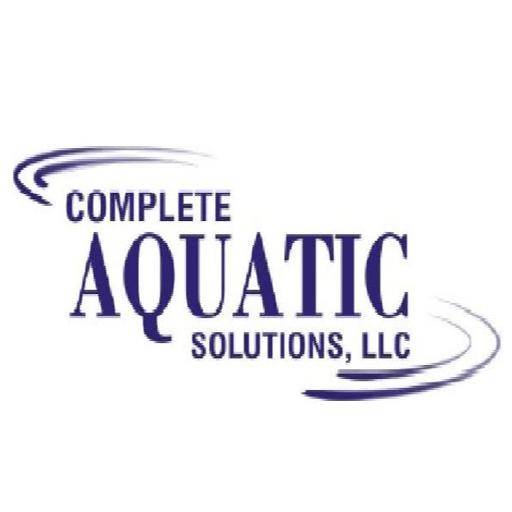
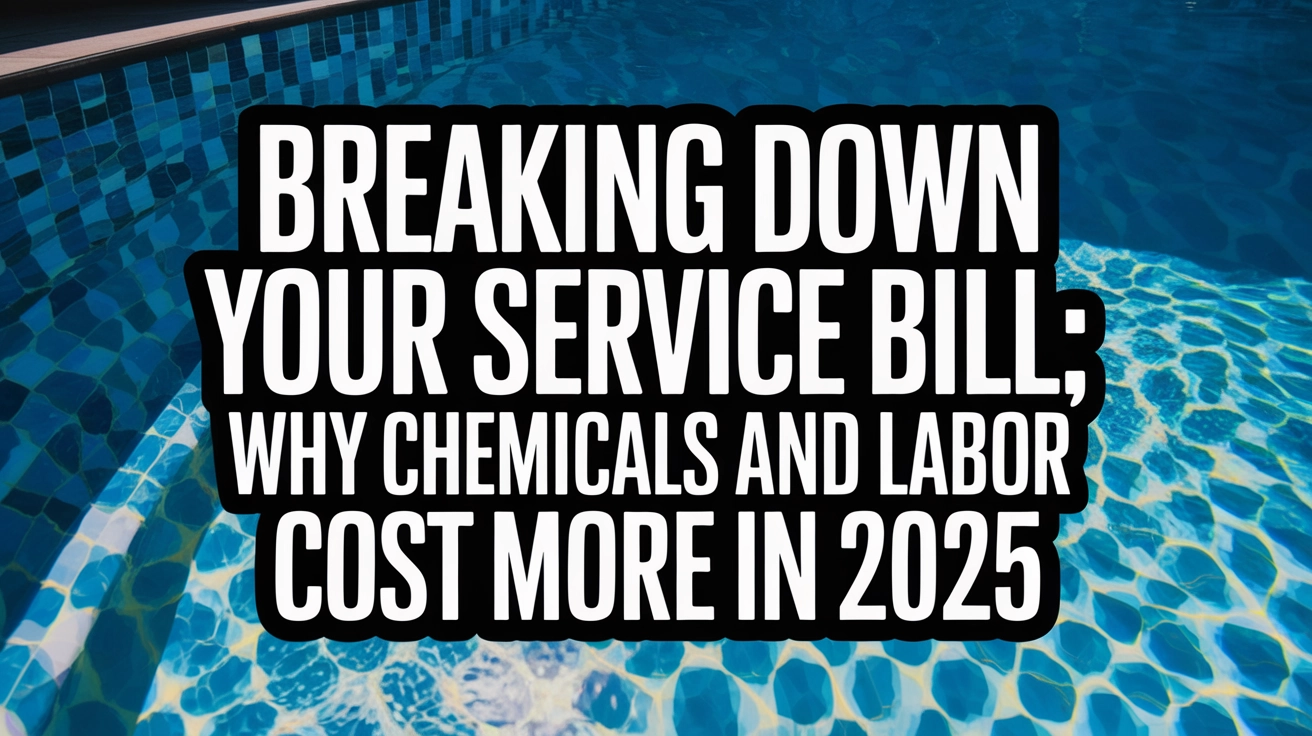
0 Comments